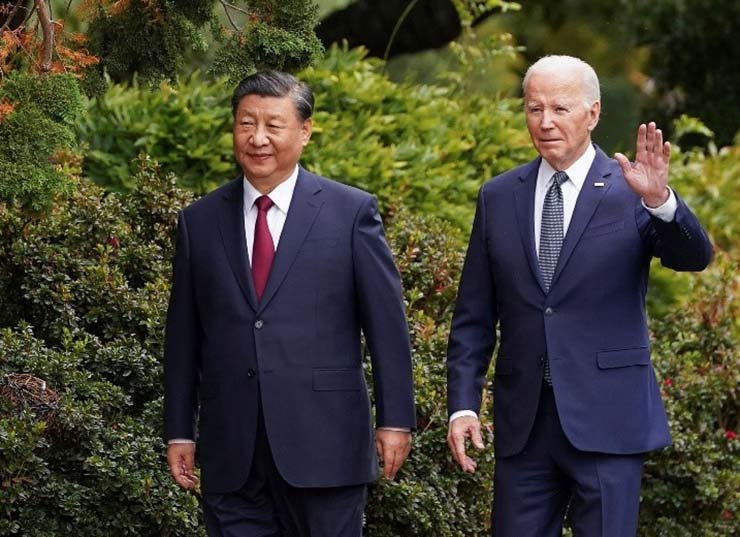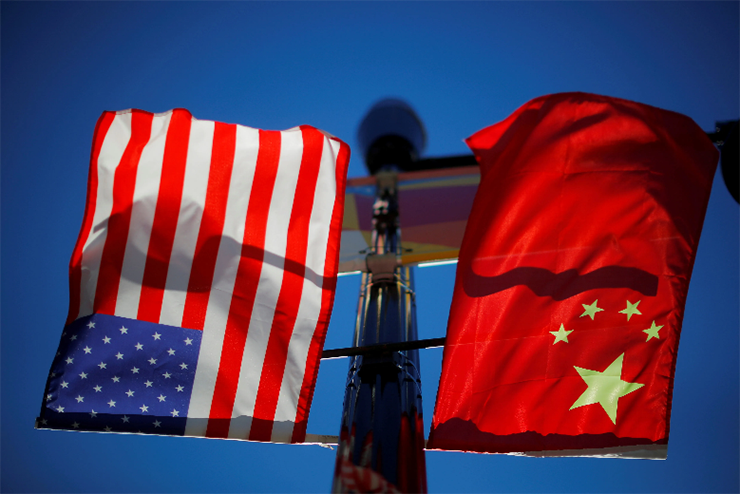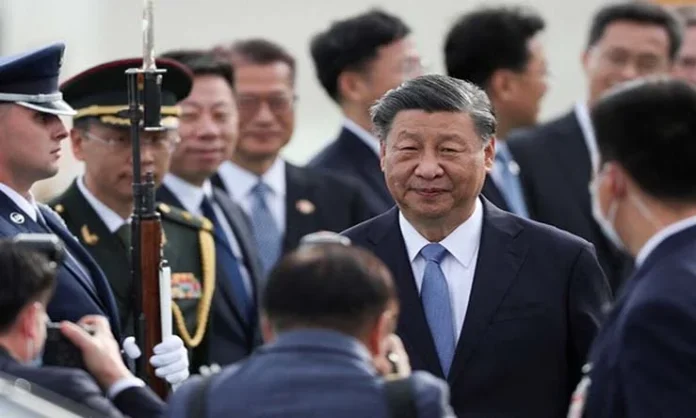High On Optics: An extended travel plan for President Xi in the US finally culminated on November 18. Since his arrival on November 14 at San Francisco, Xi went around some of the landmark places mixing work with pleasure. It was a visit high on optics and subsequently proved, low on substance. Chinese and their American hosts have been working overtime since last few months to pull off this high profile tour, a first for Xi in last six years when he met the then US president Donald Trump. The agenda for bilateral talks was very simple: to restore semblance of normality in mutual relations and improve military-to-military communications.
One of the prime reasons for this high-octane visit was the persistent fear that mistrust shouldn’t derail the outcome to insignificant levels. Chinese played smart here as they clubbed Xi’s sojourn with the Asia-Pacific Economic Cooperation (APEC) Summit, it was just an insurance against a raging possibility of a failed state visit. Such a scenario would have been catastrophic for Xi’s domestic reputation and entirely unacceptable to his close coterie. This also clarifies why the summit followed the state visit and not the other way round. In the eventuality of a less than acceptable outcome of the summit between the heads of states, at least parting memories should be sweet. The time spent in APEC discussions were designed to dilute any bitter memories as also to divert unpleasant commentary from the global media.
Xi’s sojourn to the US was clubbed with the Asia-Pacific Economic Cooperation (APEC) Summit, just as an insurance against a raging possibility of a failed state visit. Commentary pieces by the Chinese media made rosy assessments, about how Xi’s US trip has steadied the ties between the two countries, whereas the US think tanks appeared skeptical about the outcome
Elaborate Arrangements
From Xi’s US departure to his arrival back in China, the itinerary was micromanaged and cross checked to remove any iota of unpleasantness, while the Chinese media was building up this Summit as an opportunity to further the ‘friendship’ between the two countries. Each aspect of President Xi’s state visit and activities in the US was fixed frame by frame. The entire effort was to set a familiar sense of predictability for both the leaders at every step, removing any chances of surprises. Apart from all diplomatic and security protocols, which in any case are essential components of a state visit, Xi’s personal preferences were on full display. Where he doesn’t want to meet his US counterpart, which route he travels, what he views from his car window, and which camera angle he should be clicked from, everything was fine-tuned by the Chinese Communist Party mandarins.

It all might appear odd but shockingly it was true, so when the venue of summit was changed to Filoli, in Northern California about 40 km South of San Francisco, it was designed to give it a separate identity of a bilateral meet. The summit venue was kept undisclosed to prevent protest groups from converging. The effort was all designed to maintain President Xi’s so-called aura on the American soil. Peoples’ Daily in its November 19 commentary piece made rosy assessments, about how their President’s US trip has steadied the ties between the two countries. On the other hand the US think tanks appeared skeptical about the outcome, the agreement to jointly explore AI ethics for military use, Climate pact and China’s unwillingness to show sanity in its Taiwan policy were all sited as giving too much to Chinese.
Trust Deficit
Post Covid pandemic of 2019, the trust deficit between these two Nations has sharply increased. Mutual trust was already experiencing headwinds since Xi’s era as the president begun in 2013. China’s aggressive posturing in the region was raised significantly around South and East China seas. Belligerent patrolling around Taiwan, Japan and Southern waters took shape of confrontation with neighbours. It constructed artificial islands expanding 3000 acres on seven coral reefs and also militarised uninhabited ones, to bolster ring of outer defence across its mainland. It’s persistent disregard for internationally agreed treaties like UNCLOS and restricting movements in and around South China Sea, led to realisation of serious security challenges that China is throwing up. On the other hand China’s economically predatory project Belt and Road Initiative was expanding by the day. China appeared entirely unrelenting and unapologetic at the same time.

Expectedly it ringed alarm bells in the US, which had a simple choice to either see China as a strategic partner or a strategic competitor. It emerged the US finally took the call to guard its strategic turf built over decades at an immense cost. US consciously made strategic shift to the Indo-Pacific, bolstering its 7th fleet, scaling up its military exercises with Taiwan, South Korea, Japan and the Philippines. It harnessed newer security and political arrangements with existing regional powers and prioritised its global presence towards Indo-Pacific, which were all part of its redefined approach to the issue of China. It pushed for regular patrolling near Chinese claimed territories to underscore global rules-based order and freedom of navigation.
Post Covid pandemic of 2019, the trust deficit between these two Nations has sharply increased. Mutual trust was already experiencing headwinds since Xi’s era as the president begun in 2013. It’s a game of ‘who winks first’, between both the players and they don’t seem to be in any hurry. Only spoilers for this mega-play can be a rage of immaturity
These actions and initiatives of the US were all very irritating for China, not really used to be questioned or reasoned out domestically. Post pandemic and China’s border confrontation with India in 2020, the economic reshaping had started taking place. It was not only a matter of supply diversification but also sourcing of technology through Chinese enterprises. The growing concern of security grew heavily as Chinese entities appeared to double up as state espionage tools. All this while China’s relations with America’s regional allies like Australia Japan and South Korea only deteriorated from bad to worse. Chinese official threat against Nancy Pelosi’s visit to Taiwan in August 2022 and following up of its ultimatum with biggest live firepower drill along the Taiwan Straits were clear and visible signatures of inimical behaviour. The feel in the strategic corridors of the US currently is that it doesn’t have much diplomatic leverage with China to moderate its conduct and choices. Whereas Chinese very strongly feel that they can’t care less for ‘concerns’ of the US.

Existential Threats
President Xi’s just culminated visit expectedly didn’t result in any tangible outcomes, as interestingly none was expected. The announcements over opening of direct communications among their militaries and a climate agreement has only drawn immense negative publicity for United States back home, as both were the proposals from the US-end, and it reflected an approach of accommodating Chinese preferences and rewarding them with license to continue with irrational military conduct and long-term business deal worth billions at the cost of increasing strategic constraints for the US.
Present reality is that the US and China represents two opposite poles in the global geopolitical construct, it would be hard to find similarities between them, apart from them being mega military powers with strong economic heft. The world understands it, especially Asia and Europe where the majority of countries who matter have reoriented their national approach keeping these home truths in account. It’s also a fact that both American and Chinese security assessments have identified the other one as an existential threat. Howsoever majestic it may be crafted, through handshakes, strolling, and photo-ops, all are just fillers for a bigger game. It’s a game of ‘who winks first’, between both the players and they don’t seem to be in any hurry. Only spoilers for this mega-play can be a rage of immaturity and it’s a food for thought especially for the Peoples Republic of China.
–The writer, experienced in security and geopolitics, contributes to national publications and newspapers. His articles can be accessed on the popular blog site newsanalytics.co.in, focusing on geo-strategic affairs.
-The writer has varied experience in the security paradigm and is a keen follower of global geopolitics. His work has been regularly featured in national publications. Visit newsanalytics.in to access more articles from the author. The views expressed are of the writer and do not necessarily reflect the views of Raksha Anirveda





